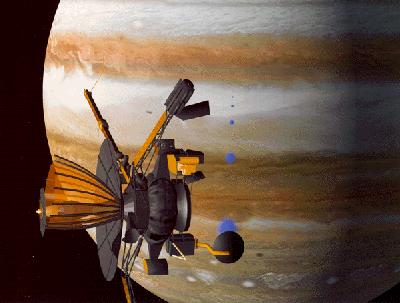Jupiter’s shadow and powerful magnetic field have been found to contribute to the formation of the planet’s outer rings. A paper in Nature this week analyzes data from a traversal of the region by the spacecraft Galileo and explains why Jupiter’s outermost ring has a mysterious extended boundary.
Jupiter’s faint ring system is composed of dust particles constrained by the orbits of inner moons. There are four main components: an inner halo ring, a thin, bright main ring and two wide but faint Gossamer rings made out of ejected material from the moons Amalthea and Thebe.
The outermost Thebe ring is the faintest, with a barely visible continuation of the ring, known as the Thebe extension, towards its outer edge. Although previous studies have concluded that impact ejecta from the surfaces of the moons helped create the rings, scientists have been unable to explain how this particular extension was formed.
Douglas Hamilton and Harald Krüger studied dust impacts detected when the spacecraft Galileo crossed Jupiter’s outer ring region in 2002-03. They discovered a gap in the rings inside Thebe’s orbit, dust grains on highly inclined paths, and a concentration of tiny dust particles inside Amalthea’s orbit. The dust grains alternately charge and discharge when crossing shadow boundaries allowing the planet’s magnetic field to excite orbital eccentricities. The authors’ modeling of this dust data indicates that it is the passage of ring particles through Jupiter’s shadow that created the Thebe extension and fully explains the Galileo results. They suggest that this form of shadow resonance may also be able to explain some of the less understood features of Saturn’s rings.
For more information, visit Nature‘s Web site here.










